Northern Vietnam, with its stunning mountain landscapes and preserved traditional cultures, offers an ideal playground for trekking beginners. Discover our selection of the most beautiful sites accessible to novice hikers.
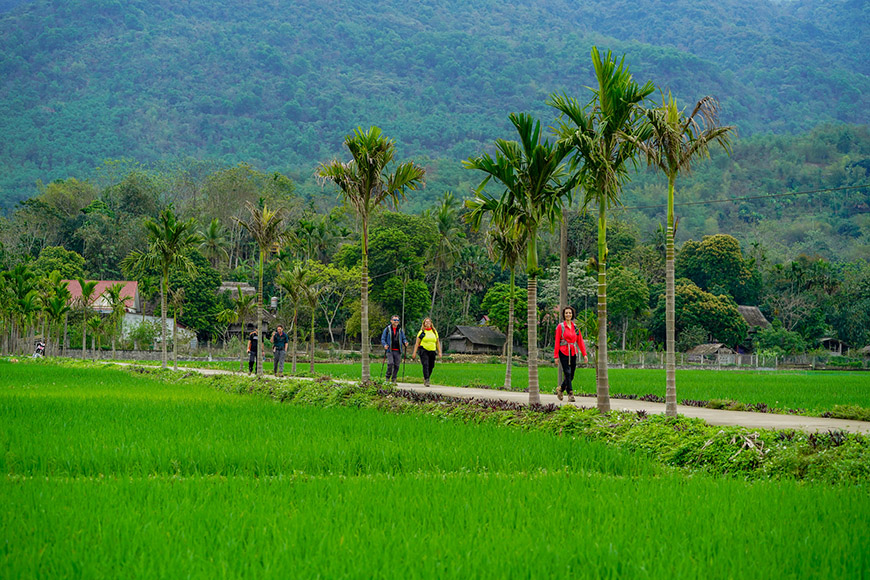
Northern Vietnam offers an ideal playground for trekking beginners - Source : Mr Linh's adventures
Mai Chau: A gentle introduction to Vietnamese trekking
Just 150 kilometers from Hanoi, Mai Chau is a perfect gateway to the world of Vietnamese trekking. This lush valley, home to the Thai people, reveals an enchanting patchwork of rice fields and traditional villages.
The mostly flat and well-maintained trails allow novice walkers to immerse themselves in Vietnamese rural life without technical difficulty. Hikes can easily be combined with homestays, offering an authentic cultural experience.
Trekking in Mai Chau: Technical sheet
- ♦ Level: Very easy to easy
- ♦ Typical duration: 2-4 hours per day
- ♦ Elevation gain: Low (100-200m)
- ♦ Features:
- ✓ Flat or slightly hilly terrain
- ✓ Well-maintained paths
- ✓ Walking mainly on trails between rice fields
- ✓ Accessible all year round
- ✓ Daily distance: 5-10 km
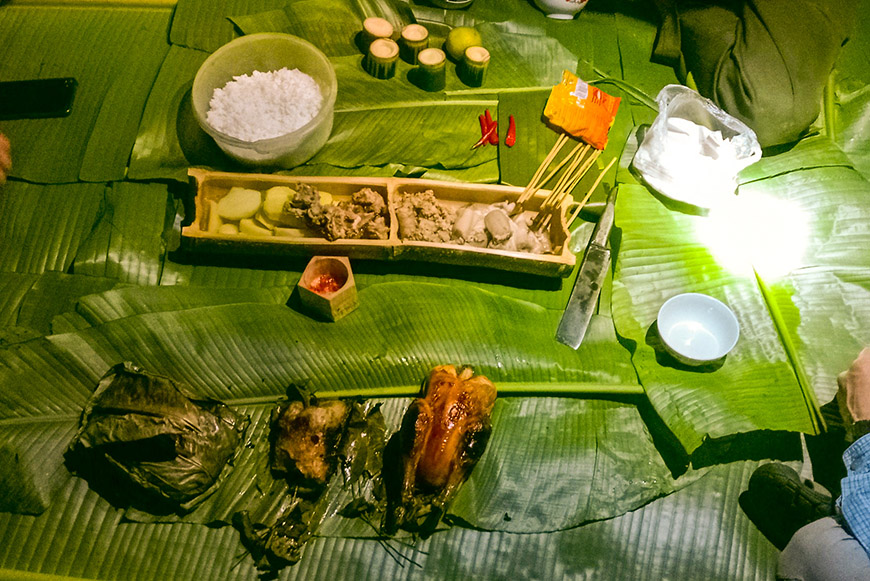
What do we eat on a trek in Ba Be? - Source : Mr Linh's adventures
Ba Be National Park: Between lake and forest
Vietnam's largest natural lake serves as a backdrop for accessible hikes in the heart of preserved nature. The paths wind between tropical forests and minority villages, offering spectacular views of the lake.
The clearly marked routes are perfect for beginners. The option to combine walking and boating on the lake adds an extra dimension to the experience.
Trekking in Ba Be National Park: Technical sheet
- ♦ Level: Easy to moderate
- ♦ Typical duration: 3-6 hours per day
- ♦ Elevation gain: Moderate (200-400m)
- ♦ Features:
- ✓ Some more technical forest sections
- ✓ Sometimes slippery terrain in the rainy season
- ✓ Possibility to combine walking and boating
- ✓ Daily distance: 8-12 km
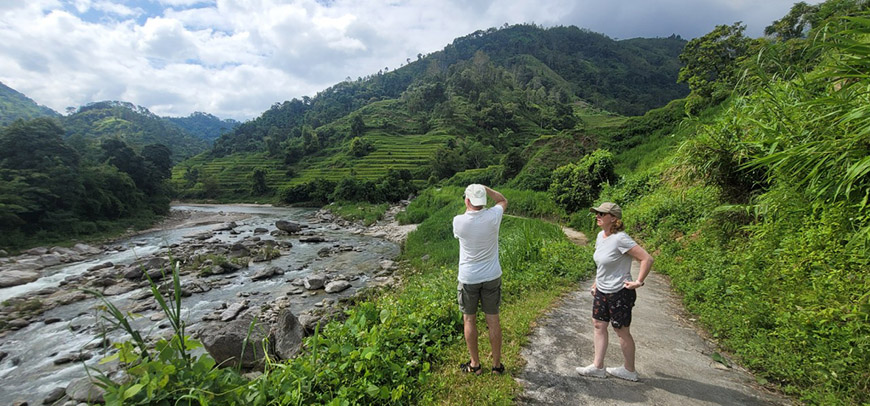
Sapa provides also easy hikes through the famous terraced rice fields - Source : Mr Linh's adventures
Sapa: Muong Hoa Valley for beginners
While Sapa is known for its challenging treks, the Muong Hoa Valley offers gentler alternatives. These easy hikes allow you to admire the famous terraced rice fields and meet the Hmong and Dao ethnic groups.
The well-maintained valley trails provide an ideal introduction to high-altitude trekking, with moderate elevation changes and regular breaks in traditional villages.
Trekking in Sa Pa: Technical sheet
- ♦ Level: Easy to moderate
- ♦ Typical duration: 4-5 hours per day
- ♦ Elevation gain: Moderate (300-500m)
- ♦ Features:
- ✓ Stairways in the rice fields
- ✓ Ground can be muddy
- ✓ Higher altitude (1500m)
- ✓ Daily distance: 6-10 km
- ✓ Numerous resting points in the villages
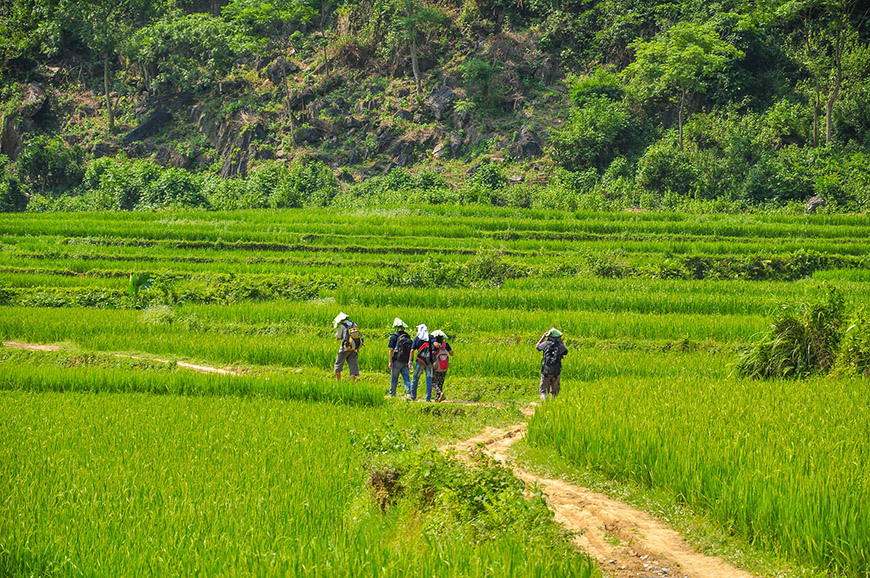
The Pu Luong Nature Reserve combines wild nature and traditional agricultural landscapes - Source : Mr Linh's adventures
Pu Luong: Preserved authenticity
This natural reserve located 160 kilometers from Hanoi harmoniously combines wild nature and traditional agricultural landscapes. Day hikes allow you to discover spectacular terraced rice fields and less touristy villages.
The advantage of Pu Luong lies in its well-marked trails and adaptable circuits, allowing beginners to adjust their effort level according to their abilities.
Trekking in Pu Luong Nature Reserve: Technical sheet
- ♦ Level: Easy to moderate
- ♦ Typical duration: 3-5 hours per day
- ♦ Elevation gain: Moderate (200-400m)
- ♦ Features:
- ✓ Well-marked trails
- ✓ Some steep sections
- ✓ Mixed terrain (rice fields and forest)
- ✓ Daily distance: 7-12 km
- ✓ Shorter circuit options available

Ha Giang offers easy hikes with exceptional panoramas- Source : Mr Linh's adventures
Ha Giang: Options for all levels
While Ha Giang is often associated with adventurous treks, the region also offers routes suitable for beginners. The valleys around the karst plateau offer easy hikes with exceptional panoramas.
Trekking in Ha Giang: Technical sheet
- ♦ Level: Moderate
- ♦ Typical duration: 4-6 hours per day
- ♦ Elevation gain: Variable (300-600m)
- ♦ Features:
- ✓ More rugged terrain
- ✓ Some exposed sections
- ✓ Variable altitude (up to 1500m)
- ✓ Daily distance: 10-15 km
- ✓ Requires better physical condition
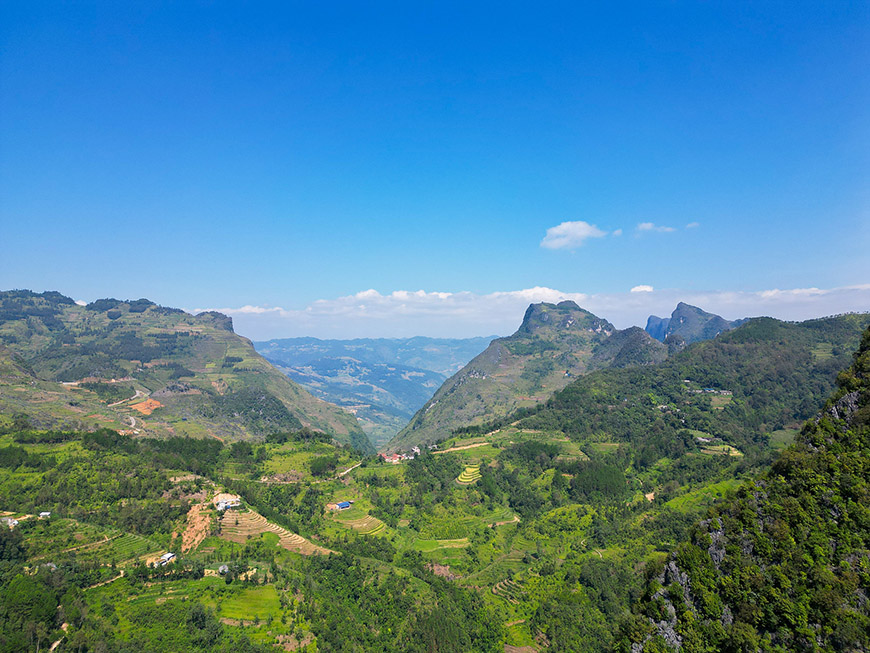
Autumn is the optimal time to enjoy trekking in Northern Vietnam - Source : Mr Linh's adventures
Best Time to Go? The best seasons for trekking in Northern Vietnam
For the most enjoyable trekking experience in Northern Vietnam, with ideal weather conditions and breathtaking scenery, autumn (September to November) is the optimal time to visit. The climate is dry, temperatures are mild, and the landscapes are adorned with golden rice terraces and lush greenery.
Spring (March to May) offers an equally pleasant alternative. Temperatures are moderate, the region is in bloom, and while there may be occasional showers, they are generally brief.
Conversely, it is advisable to avoid summer (June to August) due to intense heat, high humidity, and heavy rainfall that can make trails difficult to navigate. Winter (December to February) is characterized by cold temperatures, especially at higher altitudes, which can make hiking less comfortable.
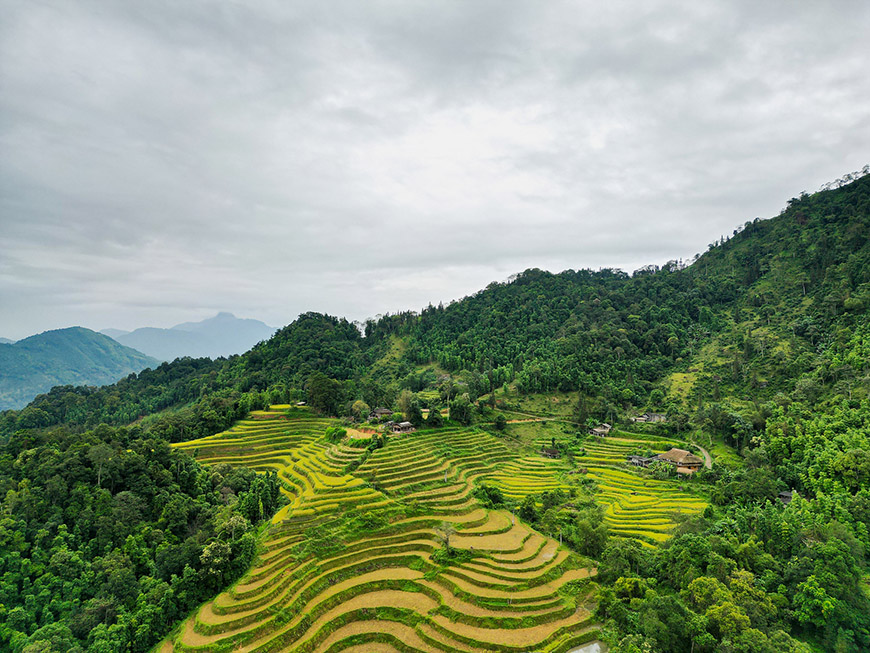
A successful trek is a well-prepared trek - Source : Mr Linh's adventures
Practical Tips for Beginners
- • Regular walking practice before departure
- • Get used to carrying a light backpack
- • Do some training hikes
- • Choose day hikes to start
- • Prefer autumn or spring periods
- • Book a local guide for safety and cultural interactions
- • Carry enough water
- • Opt for comfortable and already worn walking shoes
Northern Vietnam offers an ideal setting to start trekking, combining technical accessibility and cultural richness. Whether you choose Mai Chau, Ba Be, Sapa, Pu Luong, or Ha Giang, you will have an unforgettable experience in the heart of one of the most authentic regions in Southeast Asia.